Various - Birds Illustrated by Color Photography Vol 3. No 5.
Здесь есть возможность читать онлайн «Various - Birds Illustrated by Color Photography Vol 3. No 5.» — ознакомительный отрывок электронной книги совершенно бесплатно, а после прочтения отрывка купить полную версию. В некоторых случаях можно слушать аудио, скачать через торрент в формате fb2 и присутствует краткое содержание. Жанр: periodic, Биология, Природа и животные, foreign_edu, на английском языке. Описание произведения, (предисловие) а так же отзывы посетителей доступны на портале библиотеки ЛибКат.
- Название:Birds Illustrated by Color Photography Vol 3. No 5.
- Автор:
- Жанр:
- Год:неизвестен
- ISBN:нет данных
- Рейтинг книги:5 / 5. Голосов: 1
-
Избранное:Добавить в избранное
- Отзывы:
-
Ваша оценка:
- 100
- 1
- 2
- 3
- 4
- 5
Birds Illustrated by Color Photography Vol 3. No 5.: краткое содержание, описание и аннотация
Предлагаем к чтению аннотацию, описание, краткое содержание или предисловие (зависит от того, что написал сам автор книги «Birds Illustrated by Color Photography Vol 3. No 5.»). Если вы не нашли необходимую информацию о книге — напишите в комментариях, мы постараемся отыскать её.
Birds Illustrated by Color Photography Vol 3. No 5. — читать онлайн ознакомительный отрывок
Ниже представлен текст книги, разбитый по страницам. Система сохранения места последней прочитанной страницы, позволяет с удобством читать онлайн бесплатно книгу «Birds Illustrated by Color Photography Vol 3. No 5.», без необходимости каждый раз заново искать на чём Вы остановились. Поставьте закладку, и сможете в любой момент перейти на страницу, на которой закончили чтение.
Интервал:
Закладка:
Various
Birds Illustrated by Color Photography Vol 3. No 5
COLOR IN MUSIC
"No ladder needs the bird, but skies
To situate its wings,
Nor any leader's grim baton
Arraigns it as it sings.
The implements of bliss are few —
As Jesus says of Him,
'Come unto me,' the moiety
That wafts the cherubim."
OH, Music! voice inspired of all our joys and sorrows, of all our hopes and disappointments, to thee we turn for life, for strength and peace. The choristers of Nature – the birds – are our teachers. How free, how vital, how unconstrained! The bird drops into song and delicious tones as easily as he drops from the bough through the air to the twig or ground. To learn of the bird has been found to be a truthful means whereby children's attention and interest may be held long enough to absorb the sense of intervals in pitch, notation on the staff, and rythms.
In teaching a child, it is obvious that the desire to learn must be kept widely awake, and heretofore black notes on five lines and four spaces, with heiroglyphics at the beginning to denote clef, and figures to indicate the rhythm of the notes, have never interested children. But now, color and the bird with its egg for a note, telegraph wires for the staff, and swinging the pulsing rhythm instead of beating the time, has charmed children into accomplishment of sight singing and sweet purity of tone. Formerly, and by the old method, this was a long and laborious task, barely tolerated by the musical child and disliked by the little soul unawakened thereby to its own silent music.
It may be questioned, what is the new method, and what its value? The method is this: In recognizing tone, the finer and more sensitive musician has realized that certain intervals of scale suggested to their minds or reminded them of certain colors. Thus the Doh, the opening and closing tone of the scale, the foundation and cap stone, suggested Red, which is the strong, firm color of colors, and on the ethical side suggested Love, which is the beginning and end, the Alpha and Omega of Life. This firmness and strength is easy to recognize in the tune "America," where the tonic Doh is so insistent, and colors the whole melody. "The Star-Spangled Banner" and "Hail Columbia" are other strong examples.
The Dominant or fifth tone in the scale is clear and pure, which the blue of heaven represents, and so also the quality of aspiration or exaltation is sounded. This is joyously clear in the Palestrina "Victory," set to the Easter hymn, "The strife is o'er the battle done."
The Mediant or third of the scale is peaceful and calm, and the color Yellow is suggested, with its vital, radiating, sunshiny warmth and comfort. The "O, rest in the Lord" from "Elijah" exemplifies this quality of restful and peaceful assurance. Of the tones of the Dominant chord besides the Soh which we have considered, the Ti or seventh interval is full of irresolution and unrest, crying for completion in the strong and resolute Doh. This unrest and yearning suggest the mixed color Magenta. The quality is expressed in bits of an old English song entitled "Too Late." The insistency of the seventh is felt in the strong measures with the words, "oh let us in, oh, let us in."
The Ray or second of the scale which completes the Dominant chord is rousing and expectant – quite in contrast to the eagerness and dispair of the seventh. This second is represented by orange, the mixture of red and yellow between which it stands being equally related to both, with the expectancy born of trust and rest which the Mediant expresses, and the rousing hopefulness which is the outcome of the firm strength and conviction of the Doh. As a musical example take Pleyel's hymn set to the words: "Children of the Heavenly King." In the remaining tones of the sub-dominant chord Fah and Lah, we find Fah the fourth has a distinctively leaning tendency, a solemnity which calls forth the direct opposite of the seventh or Ti which yearns upward and cannot be otherwise satisfied, while Fah is a downward leaning, a protective and even-solemnly grand, dependent tone. We hear this in the dead march in "Saul," and the almost stern reproach in the two measures of "Too late, too late, ye cannot enter now." Fah's tonal qualities suggest the protective green.
Lah, or the sixth tone is expresive of tender sympathy, and unlike Fah, is a variable tone which may turn upward or downward for rest. It is found prominently in Minor music and is represented by the half mourning color of lavender or violet. "By the sad sea-waves" is a good illustration of this gentle wail.
While these emotional effects are certainly true, it may be well to remind the reader that when modulation comes in, the character of the tones is necessarily changed; just as the appearance and impression of an individual will be modified and altered by change of surroundings. Consequently these effects are strong only in the pure unmodulated key.
In awakening the musical sensibility of the child, we are rescuing it from probable loss of appreciation for the noble, and true, and fine. This loss is shown by such as are pleased with the trash of the "popular" tunes of a day – tunes which express nothing worthy of the great gift of expression. Music is life in all its moods and tenses, but we should be sensitive only to that which is the expression of the best and most helpful.
Through the many percepts of sight of the birds which represent the intervals of the scale, of touch in pasting the little colored discs on the staff, of ear in singing the tones of the Doh bird, the Me bird, the Soh bird, etc., the child finds the symbols and mechanics of musical notation entrancing instead of tedious.
In teaching the rythms and value of notes the imagination is called upon in marking off rooms instead of measures, and putting one or more bird eggs into them, naming them with the time names and swinging the rythm with a snap-tape measure.
Agnes Stewart.In charge of classes in Color Music and assistant teacher of Voice in The Mrs. John Vance Cheney School, Steinway Hall, Chicago.
CONTENTMENT
ONCE on a time an old red hen
Went strutting around with pompous clucks,
For she had little babies ten,
A part of which were tiny ducks;
"'Tis very rare that hens," said she,
"Have baby ducks, as well as chicks;
But I possess, as you can see,
Of chickens four and ducklings six!"
A season later, this old hen
Appeared, still cackling of her luck,
For though she boasted babies ten,
Not one among them was a duck!
"'Tis well," she murmured, brooding o'er
The little chicks of fleecy down,
"My babies now will stay ashore,
And, consequently, cannot drown!"
The following spring the old red hen
Clucked just as proudly as of yore;
But lo! her babies were ducklings ten,
Instead of chickens, as before!
"'Tis better," said the old red hen,
As she surveyed her waddling brood,
"A little water, now and then,
Will surely do my darlings good!"
But, oh! alas, how very sad!
When gentle spring rolled round again,
The eggs eventuated bad,
And childless was the old red hen!
Yet, patiently she bore her woe,
And still she wore a cheerful air,
And said: "'Tis best these things are so,
For babies are a dreadful care!"
I half suspect that many men,
And many, many women too,
Could learn a lesson from the hen,
With foliage of vermilion hue.
She ne'er presumed to take offence
At any fate that might befall,
But meekly bowed to Providence. —
She was contented – that was all!
THE FASCINATION OF BIRD STUDY
Интервал:
Закладка:
Похожие книги на «Birds Illustrated by Color Photography Vol 3. No 5.»
Представляем Вашему вниманию похожие книги на «Birds Illustrated by Color Photography Vol 3. No 5.» списком для выбора. Мы отобрали схожую по названию и смыслу литературу в надежде предоставить читателям больше вариантов отыскать новые, интересные, ещё непрочитанные произведения.
Обсуждение, отзывы о книге «Birds Illustrated by Color Photography Vol 3. No 5.» и просто собственные мнения читателей. Оставьте ваши комментарии, напишите, что Вы думаете о произведении, его смысле или главных героях. Укажите что конкретно понравилось, а что нет, и почему Вы так считаете.




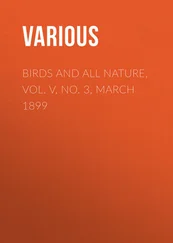
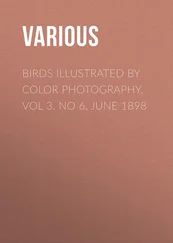
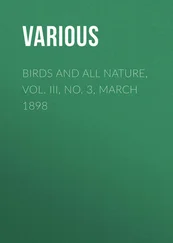
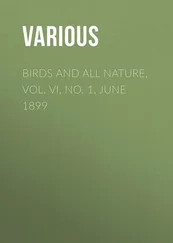
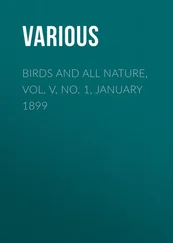

![Various - Birds Illustrated by Color Photography [January, 1898]](/books/746296/various-birds-illustrated-by-color-photography-ja-thumb.webp)

![Various - Birds Illustrated by Color Photography [February, 1898]](/books/746443/various-birds-illustrated-by-color-photography-fe-thumb.webp)